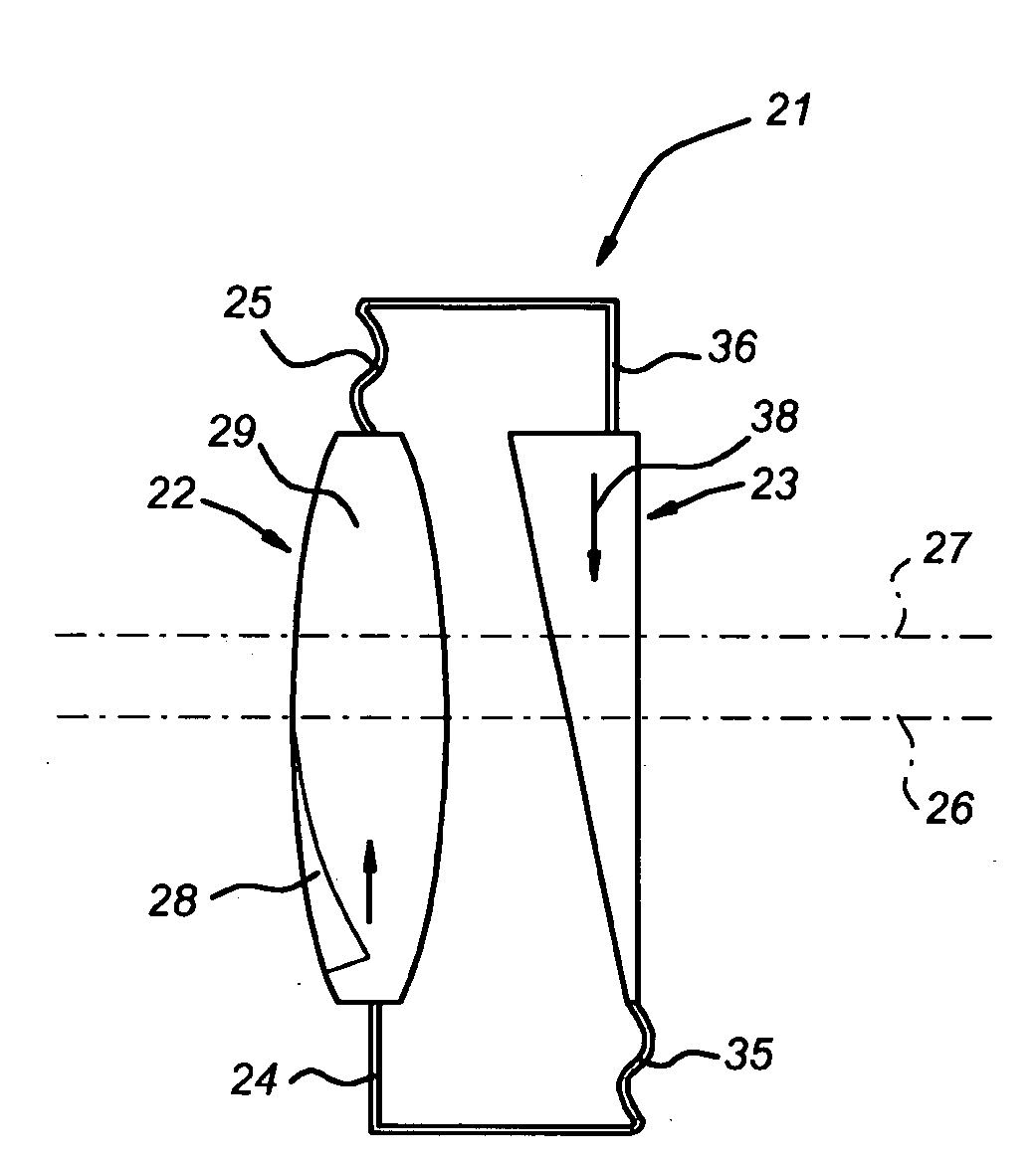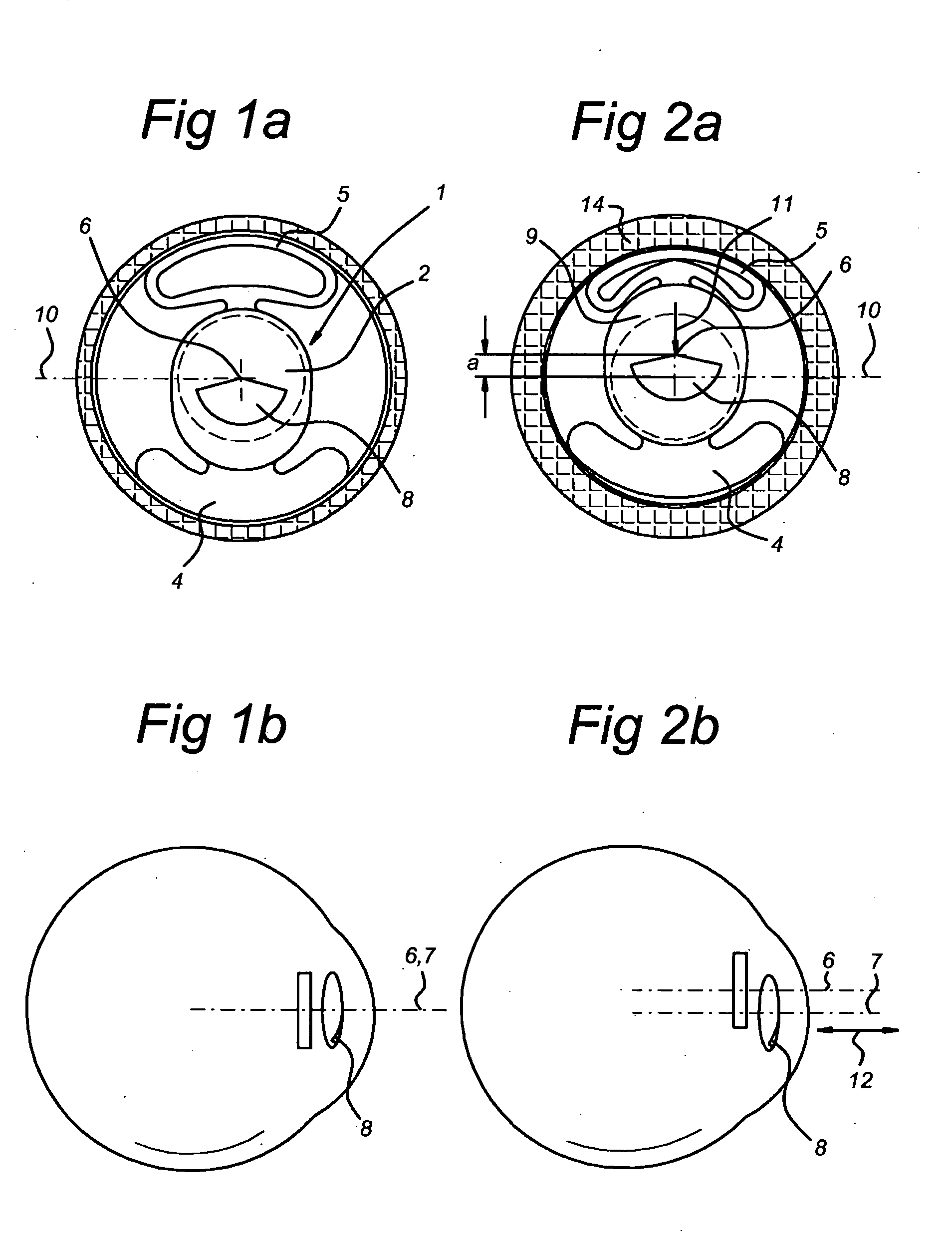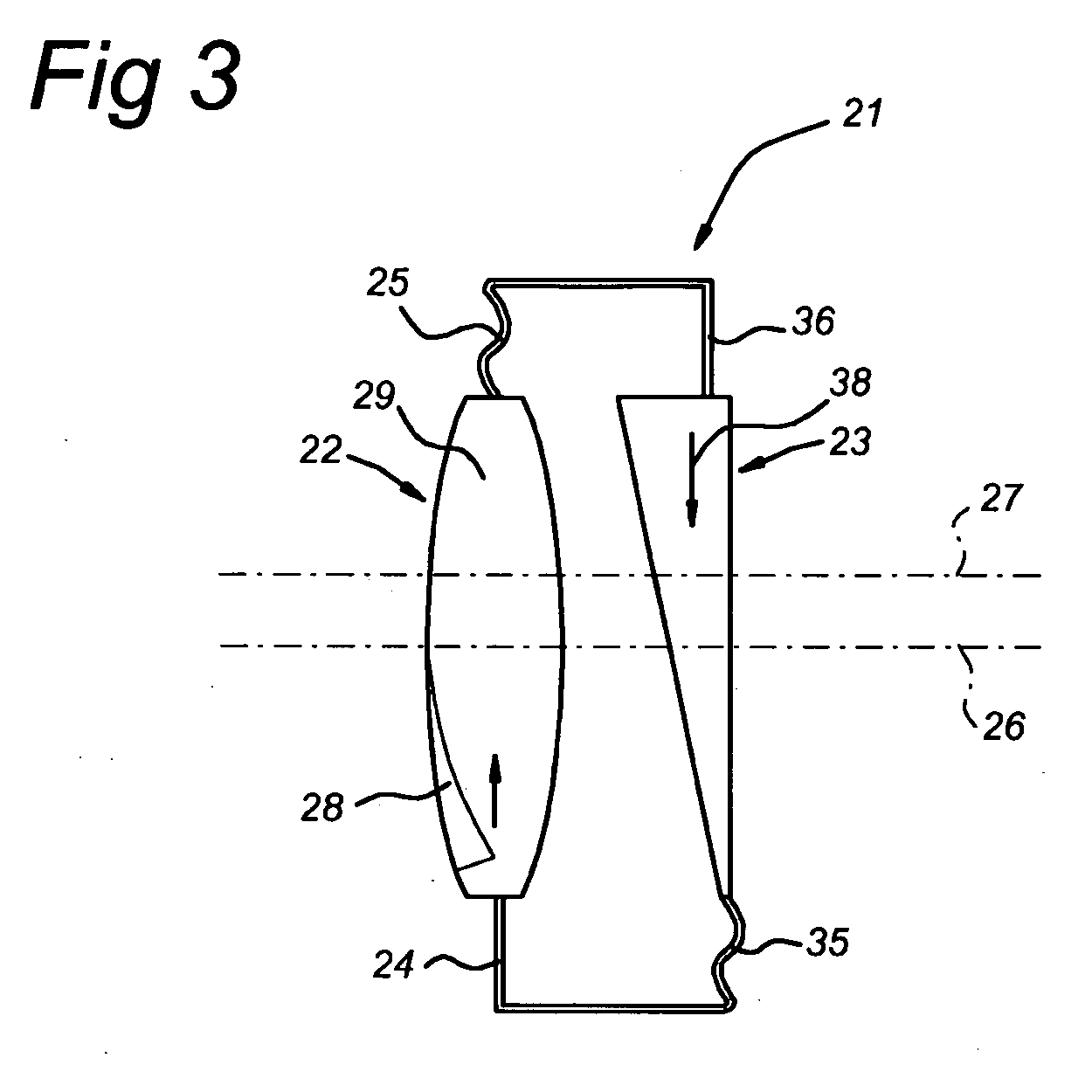Multifocal Iol
a multi-focal, iol technology, applied in the field of intraocular lenses, can solve the problems of large opening, difficult to implant a lens system of this type into the eye, and difficulty in obtaining the desired movement of two or more lenses
- Summary
- Abstract
- Description
- Claims
- Application Information
AI Technical Summary
Benefits of technology
Problems solved by technology
Method used
Image
Examples
Embodiment Construction
[0030]In FIG. 1 and more particularly FIG. 1a an intraocular lens is indicated in its entirety by 1. This consists of a lens part 2 where so-called haptics or supporting parts 4 and 5 are provided on opposite sides. In the present case two supporting parts located opposite one another are illustrated. It should be understood that, instead of two, there may be three or more supporting parts.
[0031]In the present illustrative embodiment the supporting part 5 has been made elastically deformable, while the supporting part 4 is rigid. The lens part 2 has an optical centre 6 and a horizontal longitudinal centre line 10. A distance part 9 and a reading part 8 are delimited in the lens part. The reading part 8 extends between 120 and 160 degrees.
[0032]The distance of the supporting parts 4 and 5 from the outer periphery is made such that when the haptic is not contracted the optical axis 7 of the eye coincides with the optical centre 6 of the lens. This is illustrated in FIG. 1b. Consequent...
PUM
 Login to View More
Login to View More Abstract
Description
Claims
Application Information
 Login to View More
Login to View More - R&D
- Intellectual Property
- Life Sciences
- Materials
- Tech Scout
- Unparalleled Data Quality
- Higher Quality Content
- 60% Fewer Hallucinations
Browse by: Latest US Patents, China's latest patents, Technical Efficacy Thesaurus, Application Domain, Technology Topic, Popular Technical Reports.
© 2025 PatSnap. All rights reserved.Legal|Privacy policy|Modern Slavery Act Transparency Statement|Sitemap|About US| Contact US: help@patsnap.com



